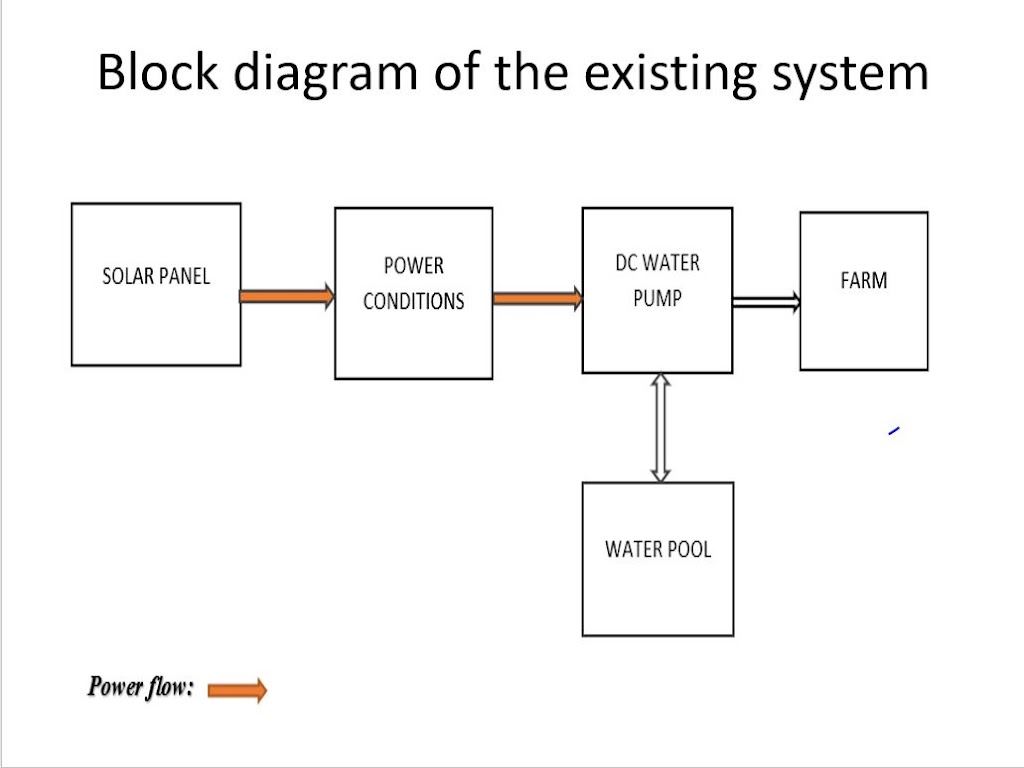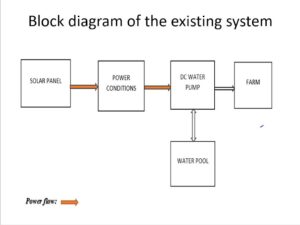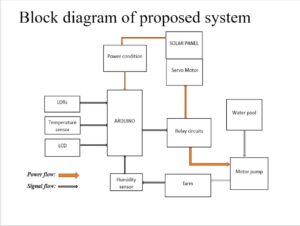DESIGN OF SOLAR PHOTOVOLTAIC WATER PUMPING FOR IRRIGATION USING SUN TRACKING SYSTEM
PROBLEM STATEMENT
At Vigwaza village located at Coastal region, Agriculture is one of the main activities conducted. During seasons of low rainfall and sunny days irrigation is being applied. Diesel and solar motor pumps are most used for irrigation, however the use of diesel in motor pumps for irrigation is a very expensive. The use of solar panels in pumping water for irrigation is seen as an alternative and the least expensive method. But there is an optimum operating point where the panel can deliver maximum possible power to the load. This point varies significantly for every individual panel depending mainly on the cell temperature, irradiance and insignificantly on some other factors. as a result, the efficiency of solar panel is low hence achieving maximum power from the solar cells throughout the day is hard resulting to poor operation of motor pumps in period of partial or total clouds.
MAIN OBJECTIVE
To design a solar PV water pumping using sun tracking system to maximize the efficiency of solar panels.
SPECIFIC OBJECTIVES
>To determine the climatological parameters of the site.
>To design a solar water pumping using sun tracking system.
>To develop and test the prototype.
SIGNIFICANCE OF THE PROJECT
>Increase production of crops.
>Improve efficiency of solar panels.
>Reduce costs encountered with the use of diesel water pumps
EXISTING SYSTEM
In this existing system they utilize the solar energy from solar panels to automatically pump water from bore well directly into a ground level firms depending on the intensity of sunlight. The pumps are fitted with motors that receive energy from solar PV arrays. The nominal power of a solar module is expressed in peak wattage (Wp). The wattage of solar panels depends on the requirement and the motors used.
PROPOSED SYSTEM
The proposed system is an automatic irrigation system powered by PV panels with single axis solar tracking. Figure 2.2 below shows the block diagram of the proposed system. It consists of Humidity sensor in the soil used to control the DC water pump operation. 2 light dependent resistances (LDRs) sensors are used to detect the sun position, this information is read and processed by a microcontroller to move a servo motor, used as actuator for a single axis PV solar tracking system. There are 2 light dependent resistors (LDR) used as light sensors since they are very sensitive to light, the resistance of LDR will decrease with increase in incident light intensity. The two light sensors are separated by a divider which will create a shadow on one side of the light sensor if the solar panel is not perpendicular to the sun. For the controlling circuit, microcontroller acts as a brain that controls the movement of the motor via relay. Data received from the sensors and processed by the microcontroller. The microcontroller will send a data to the servo motor via relay to ensure solar panel is perpendicular towards the Sun. Relay controls the rotation of the motor either to rotate clockwise or anticlockwise. The solar panel that attached to the motor will be reacted according to the direction of the motor.


